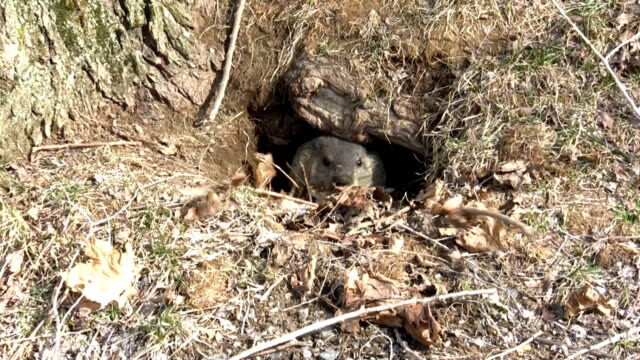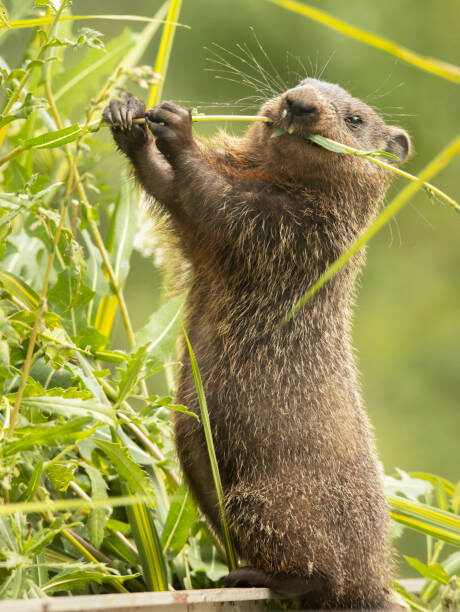As the winter chill lingers in the Chicagoland area, residents eagerly await the arrival of February 2nd, also known as Groundhog Day. This quirky tradition involves a groundhog emerging from its burrow to predict the coming of spring. While this folklore adds a touch of charm to the winter season, many might wonder: how do these furry forecasters affect the trees on our properties? In this blog post, we will explore both the positive and negative impacts groundhogs can have on trees, shedding light on their role in the local ecosystem.
Positive Contributions
- Burrowing and Soil Aeration: Groundhogs, also known as woodchucks, are excellent burrowers. Their digging activities can benefit trees indirectly. The burrows they create help in aerating the soil, promoting better water drainage, and enhancing nutrient absorption for nearby trees. This process can contribute to overall soil health, benefiting the ecosystem.

- Seed Dispersal: Groundhogs are known to forage on a variety of plants, including tree seeds. As they move about in search of food, they unintentionally aid in seed dispersal. Seeds can attach to their fur or be transported in their droppings, potentially leading to the growth of new vegetation around trees.
Negative Impacts
- Bark and Trunk Damage: Groundhogs have a voracious appetite for vegetation, and this includes the bark of young trees. In the spring and summer, groundhogs may gnaw on the bark and chew on the base of young trees. This can lead to girdling, a process where the bark is removed around the circumference of the tree, hindering the flow of nutrients, and causing damage that may lead to the tree’s decline or death.

- Root Damage: The burrowing activities of groundhogs, while beneficial for soil aeration, can also pose a threat to trees. Their extensive tunnel systems may disturb the roots of nearby trees, potentially causing instability and nutrient disruption. In some cases, this root disturbance can contribute to the decline of the affected trees.
- Feeding on Foliage: Groundhogs are herbivores, and their diet includes a variety of plants, including the leaves of trees. While occasional nibbling may not cause significant harm, repeated feeding on foliage can stress trees, particularly young or already weakened ones. This can affect the tree’s growth and overall health.

Mitigation Strategies
- Protective Barriers: To prevent bark and trunk damage, consider using corrugated pipe or wraps around the tree’s base. These physical barriers can thwart groundhogs’ attempts to gnaw on the bark, providing an additional layer of defense against potential harm. While results may vary, incorporating these methods can offer marginal relief from trunk damage.
- Repellents: There are various commercial repellents available for deterring groundhogs. However, some of these may require a licensed applicator. Consult with our experienced arborists to explore safe and effective repellent options tailored to your specific needs.
- Fencing: Installing a sturdy fence around vulnerable trees can deter groundhogs from accessing the area. Ensure that the fence extends below ground to prevent burrow intrusion.
As we celebrate Groundhog Day, it’s essential to appreciate the nuances of these creatures’ interactions with nature. Understanding the ecological roles of groundhogs can help us develop strategies to mitigate negative impacts and foster a harmonious coexistence between these intriguing animals and our precious trees. If you have concerns about the impact of groundhogs on your trees or need professional advice on tree care, don’t hesitate to call our experienced arborists at Homer Tree Care.

